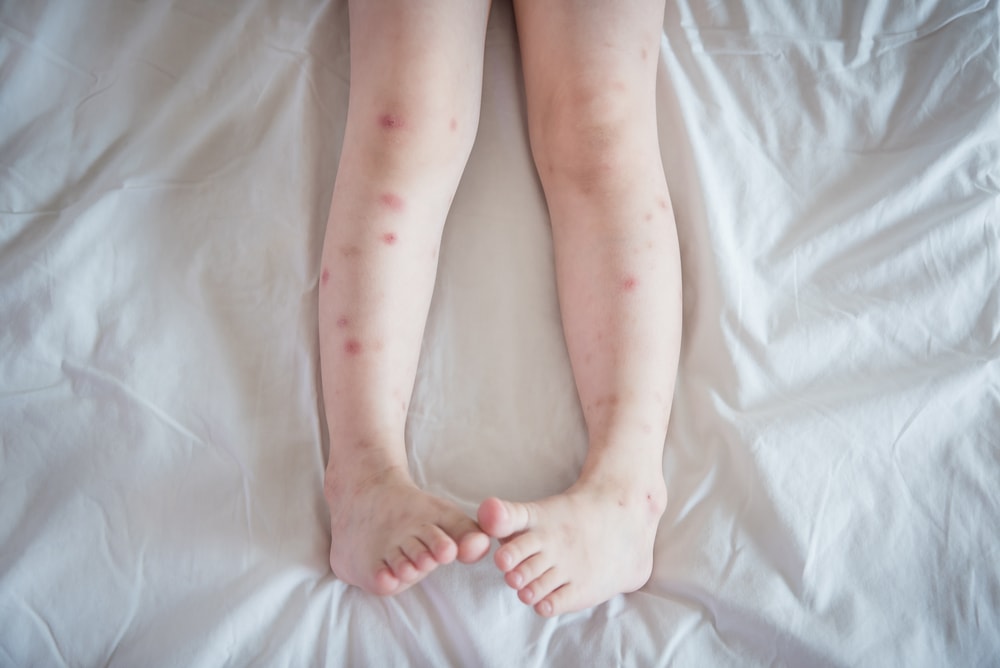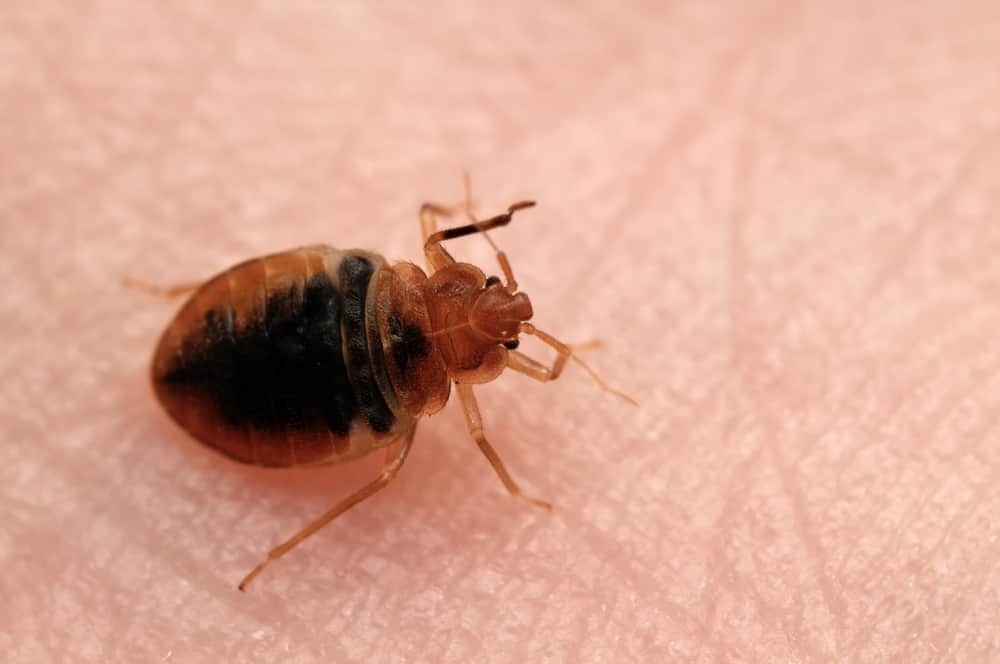You’ve undoubtedly heard the phrase, “Sleep tight, don’t let the bed bugs bite.” In fact, if you’re a parent, you may have whispered it to your kids as you tucked them in. But have you ever wondered what a bed bug bite would look like?

Bed bugs do actually bite people and they oftentimes feed at night. But how do bed bug bites look compared to bites from mosquitoes or fleas? What if bed bugs aren’t what’s nipping on you as you sleep? Learn some identifying features of bed bugs and their bites. Then find out what to do if these creatures have invaded your home.
Bed Bug Bites Compared to Other Insect Bites
Bed bugs can and will bite people any time of day. However, they prefer stationary meals, which is why you’re more likely to be bitten at night when you’re sleeping soundly.
So how do bed bug bites look compared to those of other insects? Well, it can be hard to say in some situations as there are people who may have no reaction at all to a bed bug bite. In addition, bed bug bites can take several days to show up. Bed bug bites may also look completely different on different people.
Bed bug bites are sometimes mistaken for the bites of other insects, such as mosquitoes or fleas. The bites can also be caused by a medical condition that you would need to consult with your doctor to determine. However, there are some factors that help set them apart.
Bed bug bite symptoms might include small red welts sometimes found in zigzag lines or clusters. They can show up anywhere on your body and cause localized itching. Sometimes this itching can be very severe. However, there is no symptomology that will separate bed bug bites from other bugs or a medical condition.
What Do Bed Bugs Look Like?

Adult bed bugs look kind of like apple seeds. They’re usually about one-fourth of an inch long and are reddish brown in color. They have flat oval-shaped bodies, but they can look larger and longer after they’ve eaten. Mature bed bugs have six legs, antennae and no wings.
However, it’s not uncommon for people to confuse bed bugs with other small brown bugs, including bat bugs or even carpet beetles. Therefore, it may be helpful to know that bed bugs have some preferred hiding spots, such as in the seams of mattresses, behind headboards, in bedside tables, in the junctions of ceilings, baseboards and walls or in clothes.
Are There Other Signs of Bed Bugs Homeowners Should Look For?
There are several signs of bed bugs that homeowners need to be mindful of. These are a few indicators that bed bugs may be living in your house:
- Finding molted exoskeletons (shed skins) of bed bug nymphs or bed bug eggs
- Spotting brown stains on your headboard or bedding
- Discovering blood spots on your sheets and pajamas
- Waking up with insect bites that are red and itchy
Again, even when you’re aware of these warning signs, it can be incredibly difficult to determine whether bed bugs are actually the insects causing issues in your home. In addition, bed bugs are known for being difficult to control.
That’s why contacting a professional bed bug control control service — like Terminix® — is often your best bet when it comes to potential bed bug problems. A trained technician will be able to perform an extensive inspection of the areas where bed bugs can hide, including beds, furniture and linens. If bed bugs are found, then your technician will recommend a customized treatment plan.
Terminix offers free bed bug inspections, so don’t let the thought of these parasites keep you up at night. Schedule your inspection today.



